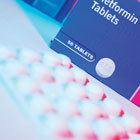Proposed NICE guidelines on type 2 diabetes have recommended the promotion of sulphonylureas to a second-line option and continued inclusion of repaglinide, in what GP experts have said are ‘worrying’ guidelines.
The revised draft guidelines have been put out for a second consultation after the original draft was criticised heavily by expert professional groups, including the Primary Care Diabetes Society and the Royal College of Physicians.
However, GPs with a special interest in diabetes have told Pulse revisions to the glucose-lowering treatment algorithm – the main subject of controversy in the first round of consultation – included ‘truly retrograde steps’.
The original draft led to a backlash from experts who described the draft recommendations as ‘bonkers’ and warned they risked making ‘a laughing stock’ of NICE, which led to NICE admitting they have made ‘substantive’ changes to the guidelines following feedback – and then bowed to pressure from stakeholders who demanded a second look at the revised draft before final publication.
But experts told Pulse that while the revised draft contains ‘improvements’, it ‘worryingly’ included the ‘reappearance of sulphonylureas’.
The previous draft update had demoted use of sulphonylureas to a third-line option in patients who cannot tolerate metformin or in whom it is contraindicated after repaglinide and pioglitazone, and second line – after pioglitazone – as an add-on therapy in people who cannot achieve glycaemic control on metformin alone.
However the revised draft now advises any of sulphonylureas, dipeptidyl dipeptidase (DPP)-4 inhibitors or pioglitazone can be used as alternatives or add-ons to metformin.
Dr Andrew Brewster, a GPSI in obesity and type 2 diabetes and research fellow at Reading University said there was mounting evidence sulphonylureas can cause harm in patients with type 2 diabetes and their reinstatement as a second-line alternative or add-on was ‘truly a retrograde step’.
The guidelines also continue to recommend repaglinide as another potential alternative to metformin, despite experts pointing out that the drug had not been widely used since the 1990s when the original guidelines were released.
Related stories
Screening the masses: GPs set for contractual incentives to measure diabetes risk
Are NICE guidelines becoming a ‘laughing stock’?
NICE bows to pressure to re-open consultation on ‘bonkers’ diabetes guidelines
Dr Brewster said about the continued inclusion of repaglinide: ‘There is no cardiovascular outcomes data, it will be subject to poor compliance, being three-times daily, it does not mitigate against insulin resistance, and is unlicenced for use with the majority of the other drugs in the treatment pathway.’
He welcomed other aspects of the revised algorithm – for example, the addition of modified release metformin as an option if standard-release metformin is not tolerated – but said the NICE algorithm failed overall to tailor treatment as now recommended by European and US guidelines.
Dr Alan Begg , a GPSI in diabetes from Montrose, also questioned the order of the algorithm, with sulphonylureas given more prominence than newer antidiabetic treatments, and said the revisions ‘remained disconnected’ from current clinical practice.
He said: ‘I am sure this will continue to raise significant comments.’
However, Dr Colin Kenny, GPSI in diabetes from Dromore, Northern Ireland said he felt the revisions brought NICE more closely in line with international guidelines.
Dr Kenny said: ‘I do not think it is going to change very much.’
A spokesperson from NICE said: ‘We encourage anyone with a relevant interest to submit their views via the NICE website so they can be fully considered by the guideline development group and help inform the final guideline.’
The consultation is open until 5pm on 24 July.
NICE – type 2 diabetes management in adults: second draft for consultation
Pulse October survey
Take our July 2025 survey to potentially win £1.000 worth of tokens





 Oviva’s fully remote Tier 3 Weight Management programme
Oviva’s fully remote Tier 3 Weight Management programme






